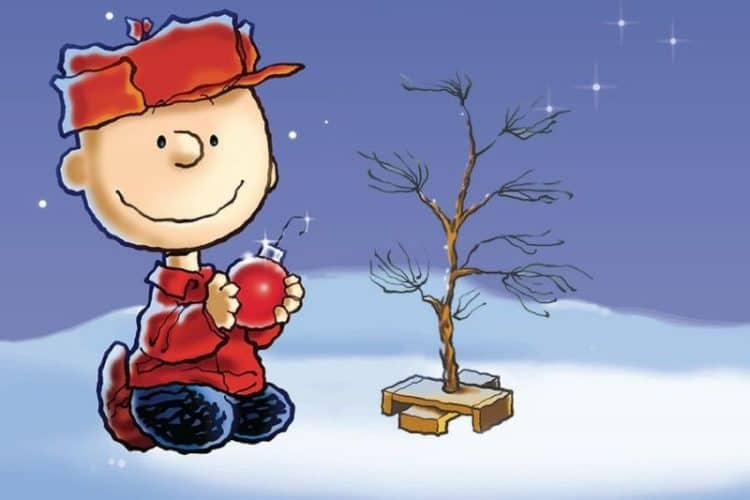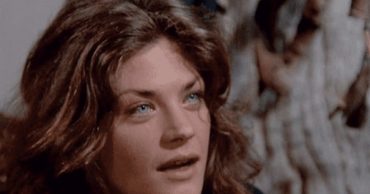
There’s no question. A Charlie Brown Christmas is one of those specials we look forward to every year. Along with millions of viewers, we tune in to see Charlie’s rebelliously tiny tree weighed down by that ornament while everyone else is just worried about what they get or how spectacular their decor should be. Heartwarmingly seditious isn’t a phrase we can use to describe any other holiday show. Yet every year, Charlie sneaks in a little anti-capitalist sentiment, and we love him for it. In honor of this delightful and beloved classic, here are ten things you didn’t know about “A Charlie Brown Christmas.”
1. The Very First Time
It sure seems like we’ve been watching the Peanuts forever. A Charlie Brown Christmas is watched by millions each year and has been for longer than many of us have been alive. The music score we all know by heart came from Vince Guaraldi, and the first time a family gathered around the TV to watch animator Charles Schulz, director Bill Melendez and producer Lee Mendelson’s holiday special was when it aired on December 9, 1965.
2. Sometimes a Little Get’s You A Lot
The overall message of the show, which is that you don’t need the biggest or best of anything to have the truest holiday spirit, is beautiful. It’s this combined with the genuine love of the Peanuts gang that has made Charlie Browns’ Christmas special into an enduring and beloved classic that has been a holiday staple for generations. However, they cut it very close and might not have been able to make the movie at all on the minuscule budget offered up by CBS and Coca-Cola. Seventy-Six Thousand dollars won’t even buy you s thirty-second SuperBowl commercial these days, but that’s what Charles Schulz was given to make this timeless classic movie. In the end, along with Lee Mendelson and Bill Melendez, Schulz ended up earning millions from the special.
3. “A Charlie Brown Christmas” Was Almost Cancelled… Twice
Sometime about halfway through the creation of the holiday favorite, an executive from McCann-Erikson stopped in. The agency represented Coca-Cola, and he thought the whole production looked just awful. He nearly told his employer that it wasn’t worth continuing, but Mendelson managed to convince him to keep it under wraps and let the characters charm their way through. Once the project was completed, just three weeks before it was set to air, the executive viewing audience at CBS found it unimpressive and too slow. However, it did air, half the viewers in the USA tuned in to see the special, and they loved it.
4. Snoopy Moves
The iconic round head of Charlie himself was more than a little problematic. The shape was rough for animators, making his movements less than smooth. Though none of them had quite the same circle dome as Chuck, most of the rest of the Peanuts kids have similar animation issues because they were initially created for a comic strip. A smooth translation was difficult at best with the technology of the time, with one exception. Snoopy was by far the easiest to animate, so he was the star of most of the action scenes.
5. Real Live Children
Another of the many things CBS absolutely hated about A Charlie Brown Christmas was the actors. More specifically, the fact that there weren’t any was a problem. All the children in A Charlie Brown Christmas are voiced by actual real live children who lived in Schulz’s neighborhood.
6. Only Sort-Of Wrong
While having real kids do all the characters was a stroke of genius that ultimately contributed to the success of A Charlie Brown Christmas, it wasn’t without flaws. Kids are delightful, whimsical, and they all develop at different rates. This matters, in this case. Though, only because some of the kids who voiced the iconic roles were unable to read at the time of the recording. Linus, among others, had to be fed the word line by line as Schulz read them so they could parrot them back.
7. Charles Schulz is Not a Fan
We’ve mentioned before that the creative dynamo who brought all that iconic music was Vince Guaraldi. What we didn’t mention was that Schulz had no say in the musical score whatsoever. In fact, he hated jazz. He wasn’t thrilled to hear it played on screen and even said so.
8. It’s Not Funny
One of the many things executives at CBS tried to push into the production was a laugh track. Fortunately, the creators of the show refused to allow it. We can’t imagine how it would have sounded with a canned audience laugh tossed in every time something amusing happens, but it certainly would not have been the same special.
9. Christmas Time Is Here
You know the song. Everyone knows the song Christmas Time is Here. The song was covered by everyone from Mel Torme to Kenny Loggins and Al Jarreau. It’s been covered over twenty times. What you probably don’t know is that Vince Guaraldi wrote it with no words. It was never meant to have them, but the execs insisted. So as an unintended addition, he scrawled some words down hastily on the back of an envelope, which took about fifteen minutes and they became one of the most famous Christmas songs ever.
10. Thanks Ford
Charles Schulz wasn’t interested in animating Peanuts. It took more than a little convincing to get him even to allow Ford Motors to put them in a commercial back in 1959. A guy by the name of Bill Melendez did the animation on that commercial, and it impressed Schulz, who would later end up working with him again to create the incredible, long-lasting A Charlie Brown Christmas. However, had it not been for one car company being so pushy, there might never have been a Christmas special or a Great Pumpkin Halloween special, which is to say nothing of the Easter Beagle.
Final Thoughts
Sometimes it’s the genuinely unexpected things that turn out the very best. From a reluctant artist to a network that was leery of religious content, kids in the studio, and even making a thirty-minute special, there were plenty of reasons why A Charlie Brown Christmas could have ended up never happening. Instead, they tossed it together on a shoestring budget, conceded very little, and insisted that it was worthy of love just as it was. As it turns out, Schulz, Melendez, Mendelson, and Guaraldi came up with a lasting and beautiful story that goes against everything a studio exec believes. Yet it worked, to everyone’s surprise. What surprised you the most? Let us know in the comments section.
 Follow Us
Follow Us




